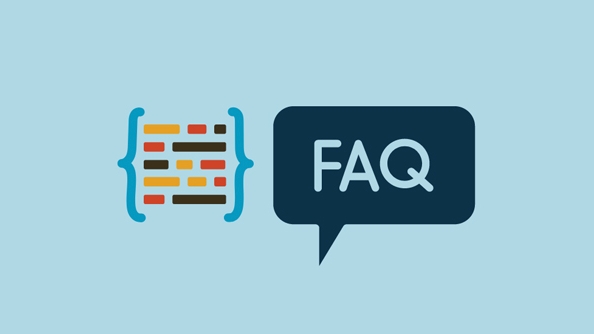what is a kernel panic on Mac
Kernel crashes are system crashes that occur when the Mac operating system encounters a serious error that cannot be recovered, usually caused by software or hardware problems. Common reasons include: 1. Flawed driver or kernel extension; 2. Hardware problems such as memory or storage failures; 3. Software conflicts; 4. Corrupted system files; 5. Peripheral triggers. It can be identified by white-word prompts on black or gray screens and "kernel panic" records in the system log. Solutions include: 1. Disconnect all peripherals and restart; 2. View the crash log through the console application; 3. Enter safe mode to boot; 4. Reinstall macOS; 5. Run Apple diagnostic tools. Occasional occurrence may be accidental, but frequent occurrences require troubleshooting of software and hardware problems.

A kernel panic on Mac is a type of system crash that occurs when the operating system encounters a critical error it can't recover from. It's not something you see often, but when it happens, your Mac suddenly restarts or freezes, usually showing a black or blue screen with some technical text.

It's Apple's way of saying, "I hit a wall and I don't know how to move forward."
What Causes a Kernel Panic?
Kernel panics are usually triggered by software or hardware issues that interfere with the core functions of macOS. Here are some common causes:

- Faulty drivers or kernel extensions (kexts) – especially third-party ones.
- Hardware problems – like failing RAM, storage issues, or GPU problems.
- Software conflicts – incompatible apps or tools running in the background.
- Corrupted system files – possible from an interrupted update or disk errors.
- Peripheral devices – sometimes a connected USB device or external drive can trigger it.
If it happens occasionally, it might just be a fluke. But if it keeps happening, there's likely a deeper issue.
How to Tell If Your Mac Had a Kernel Panic
You might not always get a clear message — sometimes the system just restarts. But here's what to look for:

- A black or gray screen with white text that says something like “Your computer was restarted because of a problem.”
- Technical log details mentioning "panic(cpu X caller 0x…)" or references to a specific kext or process.
- The system logs under Console app showing entries labeled as “kernel panic” or “panic report.”
The key thing is: it's not a regular crash. It affects the lowest level of the OS — the kernel — so the system can't just close one app and keep going.
What You Can Do When a Kernel Panic Happens
Here are some practical steps to troubleshoot and potentially fix recurring kernel panics:
- Disconnect all external devices – including drives, docks, printers, etc. Then reboot to see if the problem goes away.
- Check Console app for panic reports – Go to Console > Log Reports and open the latest panic log. Look for any repeated names of kernel extensions or processes.
- Boot into Safe Mode – This disables non-essential kernel extensions and checks the disk. To do this, restart and hold down the power key until options appear, then click Options > Safe Mode.
- Reinstall macOS – Not always necessary, but if software corruption is suspected, reinstalling the OS (without erasing data) can help.
- Run Apple Diagnostics – Shut down your Mac, then turn it on and immediately press and hold the D key. This will check for hardware issues.
If you find a pattern — like it only happens when using a certain app or connecting a specific device — that gives you a clue where to focus.
Kernel Panics Aren't Always Serious
Occasional kernel panics are rare enough that they might just be a glitch. But if they happen regularly, especially after installing new software or hardware, it's worth digging into the logs or testing components.
In most cases, identifying the culprit — whether it's a faulty driver or a problematic peripheral — can resolve the issue without too much hassle.
Basically that's it.
The above is the detailed content of what is a kernel panic on Mac. For more information, please follow other related articles on the PHP Chinese website!

Hot AI Tools

Undress AI Tool
Undress images for free

Undresser.AI Undress
AI-powered app for creating realistic nude photos

AI Clothes Remover
Online AI tool for removing clothes from photos.

Clothoff.io
AI clothes remover

Video Face Swap
Swap faces in any video effortlessly with our completely free AI face swap tool!

Hot Article

Hot Tools

Notepad++7.3.1
Easy-to-use and free code editor

SublimeText3 Chinese version
Chinese version, very easy to use

Zend Studio 13.0.1
Powerful PHP integrated development environment

Dreamweaver CS6
Visual web development tools

SublimeText3 Mac version
God-level code editing software (SublimeText3)
 Will Bitcoin peak in September? How should investors deal with it? Analysis of one article
Aug 26, 2025 pm 05:12 PM
Will Bitcoin peak in September? How should investors deal with it? Analysis of one article
Aug 26, 2025 pm 05:12 PM
On-chain and market indicators: The approximation of the risk range determines whether Bitcoin is close to the top. On-chain data and market structure provide the signal closest to actual trading behavior. Many key indicators currently show that the market has entered the "potential risk range". MVRV indicators enter the "mild danger zone". According to Cointelegraph, Santiment's latest data shows that Bitcoin's MVRV (market value to realization value ratio) has reached 21%. This indicator reflects the overall investor profit and loss status. Historical experience shows that when MVRV is in the range of 15%-25%, the market enters a "mild danger zone", which means that a large number of coin holders are already in a profitable state and their motivation to take profits is enhanced. Although it does not constitute an immediate selling signal, the price has been short
 What is Buy the dip? How to judge the bottom of the game? A detailed explanation of this article
Aug 26, 2025 pm 04:57 PM
What is Buy the dip? How to judge the bottom of the game? A detailed explanation of this article
Aug 26, 2025 pm 04:57 PM
What is bottom-buying? Buying the bottom, as the name suggests, refers to buying when the asset price experiences a sharp decline or approaches a temporary low, and expecting profits to be achieved when the price rebounds in the future. Since the market is often accompanied by panic selling during the decline, you can obtain assets at a lower cost when entering the market. As the saying goes, "Others are afraid of me, I am greedy." Therefore, before implementing the bottom-buying strategy, investors must be clear about their own operating logic and avoid falling into the dilemma of "others lose small losses and I lose huge losses." In English, there are usually two ways to express bottom-fishing: BottomFishing: a formal term, literally translated as "fishing at the bottom of the water", which means buying in an undervalued area. Buythedip: A more colloquial statement, commonly found on social media and news reports, meaning "buy while the price falls." in short
 How to turn on the firewall on Mac
Aug 22, 2025 pm 04:01 PM
How to turn on the firewall on Mac
Aug 22, 2025 pm 04:01 PM
OpenSystemSettings(orSystemPreferences)byclickingtheApplemenu,thenselectSystemSettings(Venturaandlater)orSystemPreferences(olderversions).2.OnmacOSVenturaandlater,gotoNetwork>Firewallinthesidebar;onMontereyandearlier,openSecurity&Privacy>Fi
 Ethereum price forecast for September
Aug 26, 2025 pm 03:57 PM
Ethereum price forecast for September
Aug 26, 2025 pm 03:57 PM
Ethereum's September trend will be dominated by the game between spot ETF expectations and the "September effect". Historical data shows seasonal weakness, but ETF progress may become a key catalyst. With the intensification of price volatility, investors should focus on risk management and fundamental logic rather than single price prediction.
 What is a pass key? How to create it? OEE Exchange's pass key tutorial ((APP/Web)
Aug 29, 2025 pm 03:54 PM
What is a pass key? How to create it? OEE Exchange's pass key tutorial ((APP/Web)
Aug 29, 2025 pm 03:54 PM
What is Pass Key Pass Key is a new type of authentication technology that allows users to access their accounts without manually entering their password when logging into a website or application. Through the pass key, users can complete identity authentication using fingerprint recognition, facial scanning or device unlocking methods (such as PIN code). This technology is based on the encryption key pair mechanism, providing efficient and secure protection capabilities, and effectively resisting cyber threats such as phishing attacks. Advantages of Pass Key 1. Password-free login, which is more convenient to operate: use fingerprints, faces and other biometric methods to log in directly to the account, so as to save the hassle of repeatedly entering passwords and avoid login failures caused by entering the wrong password. 2. Stronger security: Pass keys follow technical standards formulated by the FIDO Alliance and W3C, and use asymmetric encryption algorithms to replace traditional secrets.
 What is Mango Network (MGO Coin)? MGO's future development and price forecast
Sep 02, 2025 pm 08:57 PM
What is Mango Network (MGO Coin)? MGO's future development and price forecast
Sep 02, 2025 pm 08:57 PM
Directory What is MangoNetwork (MGO Token)? Technical advantages (1) Excellent performance (2) Main features of safe and reliable MangoNetwork 1. Parallel execution architecture of multiple virtual machines 2. Advanced cross-chain communication 3. High-performance consensus mechanism 4. Enhanced security through the Move language 5. Modular blockchain design How MangoNetwork operates MGO token Economics Token allocation details: Unlocking and release timetable: MangoNetwork Roadmap and Future Development MangoNetwork Price Forecast MangoNetwork 20
 How to open a zip file on a Mac?
Aug 08, 2025 pm 03:42 PM
How to open a zip file on a Mac?
Aug 08, 2025 pm 03:42 PM
Double-click to open it, and the Mac comes with its own functions without third-party software. 1. Find the .zip file and double-click it, and the system will automatically decompress it using the built-in ArchiveUtility; 2. After decompression, generate a folder with the same name, located at the same location of the original file; 3. If you need to change the decompression position, you can right-click to select "Open with ArchiveUtility" or set preferences in the application; 4. When encountering a password-protected zip file, enter the correct password to decompress it; 5. If decompression fails, check whether the file is corrupt, whether the extension is correct or re-downloaded. The entire process is simple and efficient, and usually the decompression task can be completed without additional operations.
![AirPods Not Connecting to Mac [7 Solutions]](https://img.php.cn/upload/article/001/431/639/175651440069698.jpg?x-oss-process=image/resize,m_fill,h_207,w_330) AirPods Not Connecting to Mac [7 Solutions]
Aug 30, 2025 am 08:40 AM
AirPods Not Connecting to Mac [7 Solutions]
Aug 30, 2025 am 08:40 AM
IfyourAirPodswon’tconnecttoyourMac,trythesesteps:1.RestartBluetooth.2.Forgetandre-pairAirPods.3.ChargeAirPods.4.ResetBluetoothmoduleviaTerminal.5.UpdatemacOSandAirPodsfirmware.6.Disconnectotherdevices.7.ResetNVRAM/SMC(IntelMacsonly).







